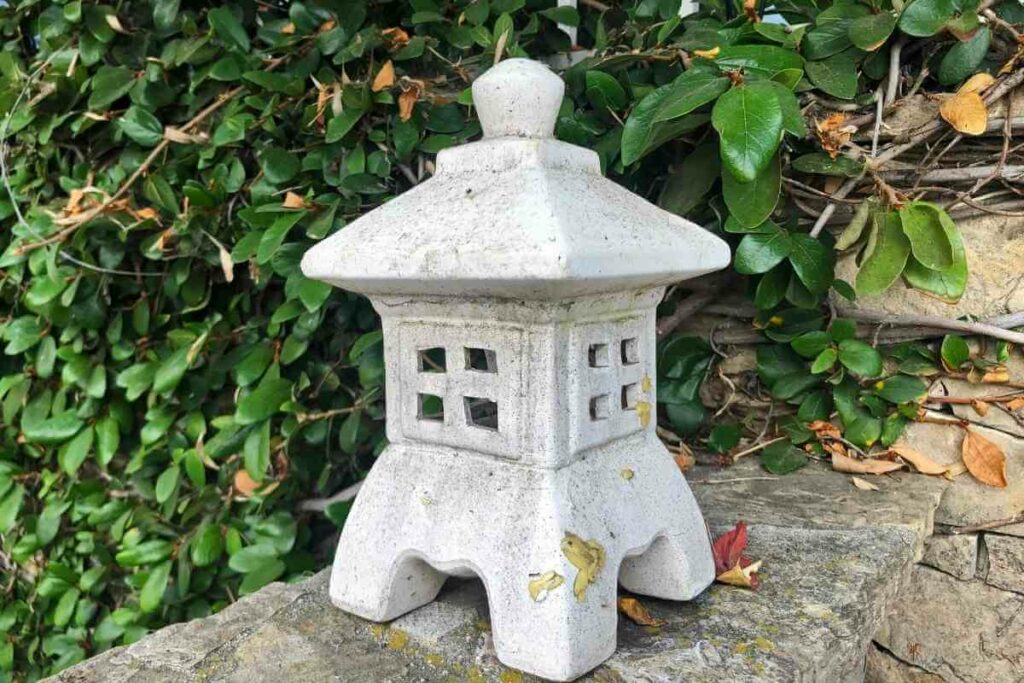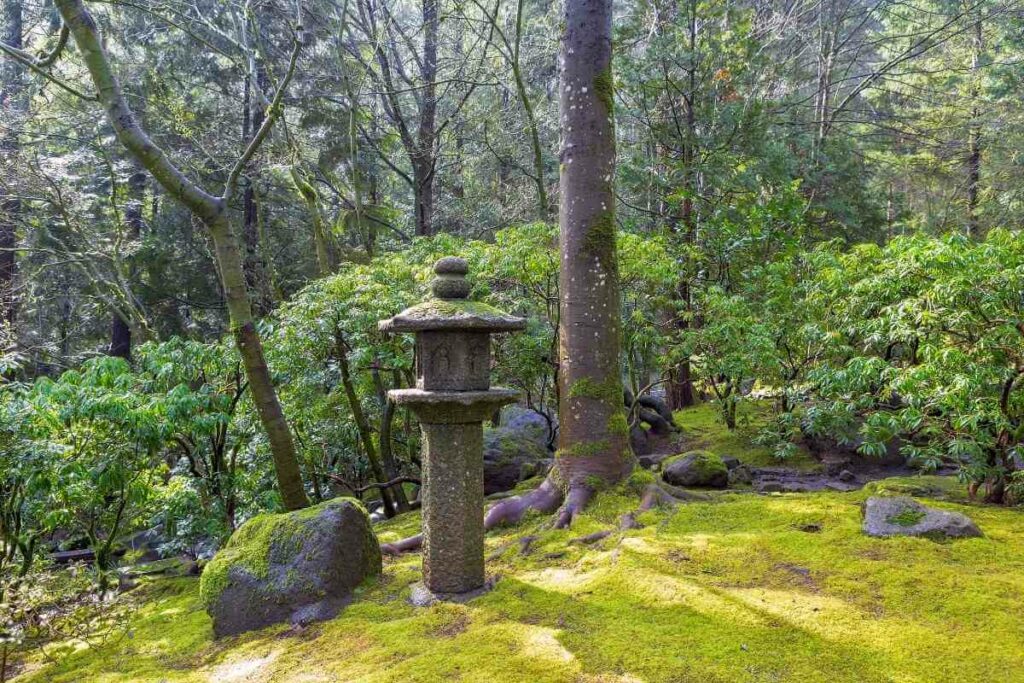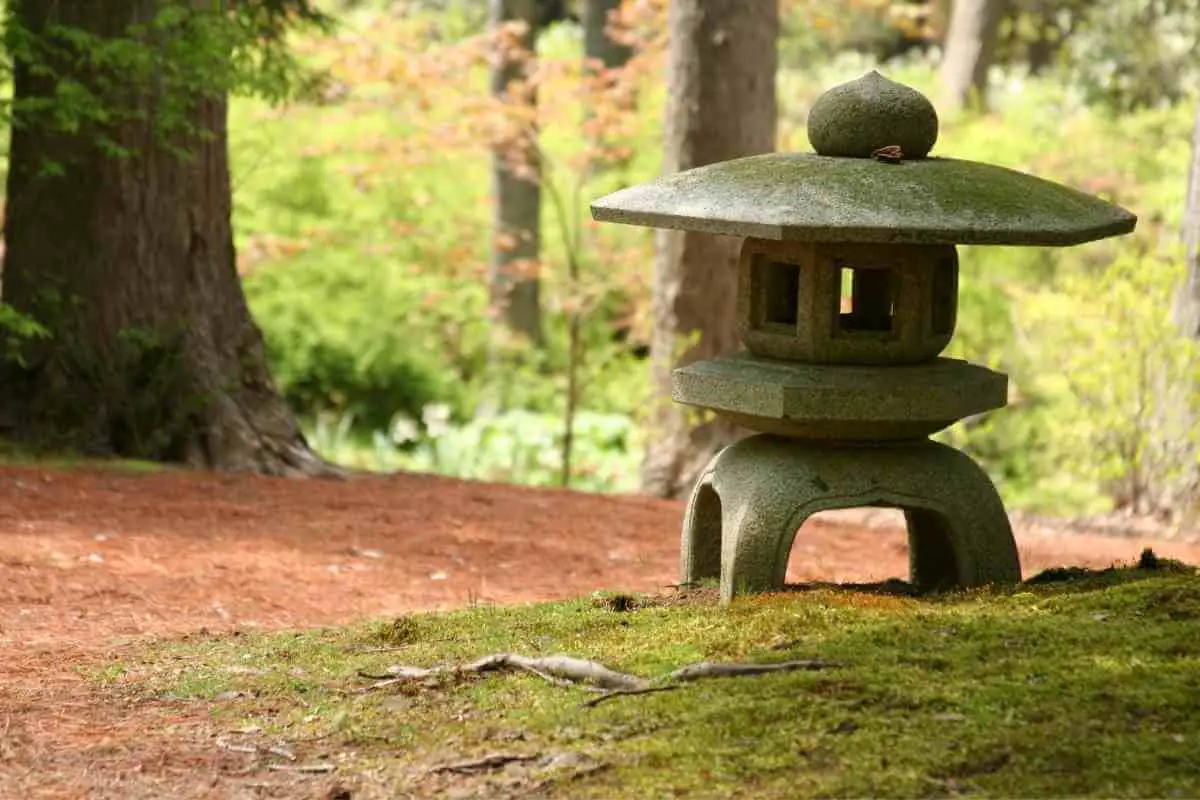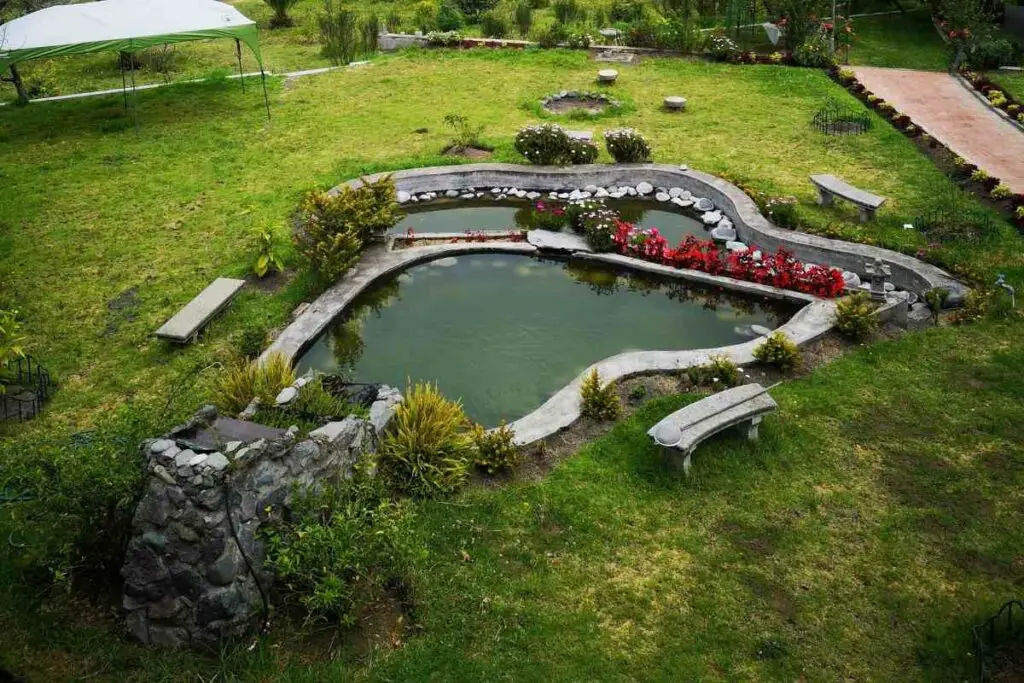Japanese pagoda lanterns are entwined in the country’s history.
Though they’ve taken on many different forms and have appeared in different types of places for thousands of years, they’ve held on to the same intrinsic meaning:
- instilling serenity
- reflecting Buddhist ideals
- and reflecting the beauty of the natural world.
History of Japanese Pagoda Lanterns
Early pagoda lanterns were created within a religious context.
Before they came to Japan from China sometime in the early 7th century, ancient stone or silver lanterns were used in China to illuminate Buddhist temples.
The lights in these lanterns, acting as offerings to the Buddha, represented Buddhist teachings to help overcome the darkness that came with ignorance.
The Japanese used them in their Shinto shrines and temples as well.
Starting in about the 16th century, the lanterns made their way into private homes and gardens.
With This Purpose: They started to take different architectural forms and sizes in gardens, each representing different figures, aspects of nature, and life events.
What are Some of the Various Meanings of Japanese Pagoda Lanterns?
For the Japanese, stone pagoda lanterns, called tōrōs, remain popular garden additions to highlight a certain landscape design or a specific location (such as a larger temple), add distinctive beauty to property or illuminate pathways.
But they have many different deeper meanings and purposes as well.
These include:
- In addition to still functioning as symbolic offerings to Buddha, during Japan’s Obon Festival, pagoda lanterns are thought to guide spirits to a home and then back to a resting place at the festival’s conclusion.
- Showcasing the importance of a serene place of worship or meditation. They are used to add harmony and balance and to emphasize the garden’s enduring nature.
- In their original form, pagodas with five stories represented Buddhist cosmology’s five elements: earth, wind, fire, water, and void. Some pagoda lanterns retain this deeper meaning in their different sections. The seven floors of a traditional pagoda reflected Buddhism’s seven treasures and seven northern stars.

- Symbolizing nature and the importance of finding beauty in the natural world even through its imperfections.
- Different forms of pagoda lanterns have their own unique meanings, as well. For example, the design of the Yukimi-gata lantern symbolizes the cycle of life. The dai-dōrō represents the five elements, with the overall design showcasing the thought that when one dies their body will return to its elemental, original form.
- The different parts of the dai-dōrō represent each element, such as the bottom piece touching the ground symbolizes the earth or chi. The tach-gata, pedestal lanterns, usually take the form of a stylized lotus, which is the symbol of career growth and increasing wealth in Japanese culture.
What are the Different Sizes and Materials Used in Japanese Pagoda Lanterns?

The two main types of pagoda lanterns found in Japan today are:
- Hanging lanterns, usually found at a temple or shrine
- And the standing lanterns that are found in the form of modern garden statues originally used in traditional gardens, or Nihon teien.
Hanging lanterns are typically made of wood, copper, or metal and can have four or six sides.
They are usually smaller than garden pagoda lantern statues.
Larger bronze lanterns are also found at shrines, but less commonly than hanging lanterns.
Hanging lanterns, or tsuridourou, often hang from the eaves of a shrine roof. Some are used to line a pathway to a large pagoda or shrine.
Standing lanterns are usually made from natural-colored cut stone, granite, and sometimes concrete or bronze.
They are mostly cylindrical in shape and use a form of a pole and base, a platform, an open or closed box-shaped area on the platform called the lightbox, a form of an umbrella or roof, and a top element or finial often referred to as a crown gem.
The base and poles are commonly square or round-shaped, and platforms, umbrellas, and other elements of a standing lantern vary upon size and function.
Certain lanterns are used specifically to be placed near water, like the Yukimi or Misaki tōrō.
Some stone lanterns are made to look older than they really are through purposeful weathering or moss accumulation.

Today’s Japanese pagoda lanterns fall into three basic categories:
- The oldest type is the taima-Ji, which is 6 feet tall and composed of six main parts.
- The second style is distinctive for its oversized middle section and lightbox, giving it a squat stature. It’s a traditional Korean temple light.
- The last style is specific to gardens and is built for that purpose. They vary in patterns and shapes. Some do not have pedestals and some are for very specific purposes, like the Yukimi (or snow viewing) lantern.
Many modern garden pagoda lanterns are emblazoned with Sanskrit letters or Buddhist symbols.
In Conclusion
With religious-based origins in 600 A.D., pagoda lanterns have become an enduring and distinctive symbol of Japan.
While still used in a formal religious or spiritual context throughout the country as part of large pagodas, temples, and shrines, their legacy can be found in the widespread popularity of stone-standing lanterns in public and private gardens.
While those lanterns still symbolize the ideals of Buddhism and Japanese culture, their striking simplicity and elegance are known throughout the world, where scores of gardens from the United States to Poland are accented with various stone pagoda lantern forms.
The world is just a bit more serene because of them.
You May Also Like
- What Should I Put in the Bottom of My Wildlife Pond?
- Backyard Oasis With Pool: Creating a Relaxing Retreat in Your Backyard
- How to Find Pond Leak (Quick Method to Find the Leaks)
- Pool Ledge Lounger – Complete Buyers Guide
- Do Garden Ponds Overflow When It Rains
- How To Fill A Pond With Water (Complete Guide)






